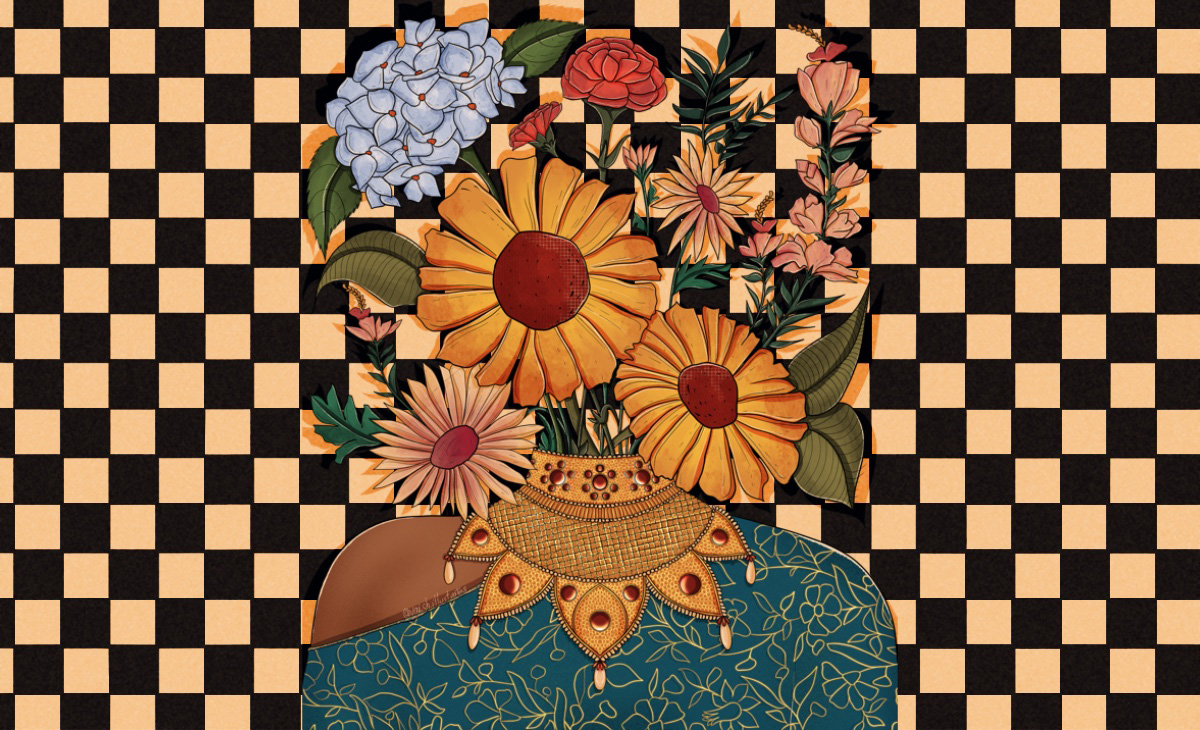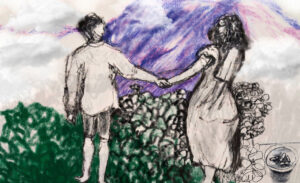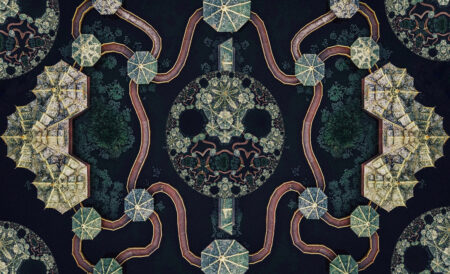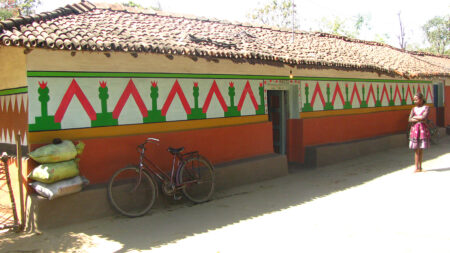Jayasree Kalathil’s career began with her doctoral research in critical humanities and almost right away became involved in the earliest forms of mental health advocacy in India. She was the founding editor of Aaina, the first Indian newsletter dedicated to mental health advocacy. Later, her work grew to emphasise the lived worlds and realities of people in mental distress. As a writer, activist and researcher she has worked for decades to challenge a medical model in understanding psychosocial disabilities. She spoke to Third Eye about this deeply feminist enterprise that centres the person’s experience over its clinical definitions. Her works includes Dancing to Our Own Tunes, Recovery and Resilience and the co-authored textbook, Values and Ethics in Mental Health.
Could you tell us about the nature of your work in the field of mental health?
The work I do is about changing what constitutes the knowledge of how we define some people as mad or mentally ill. And that knowledge, historically, has come from priests and people who are in power, and then from psychiatry and normative values of society.
The work I am part of is trying to add, but also challenge, the notion of madness or mental illness – based on the knowledge of people who have experienced those alternate states of minds, and the knowledge and views that they bring.
In the [mental health advocacy] movement, these have been historically defined as two different ways. One of the two is called survivor knowledge. I define myself as a survivor of psychiatry, not a survivor of madness, or mental illness – a survivor of the psychiatric institution, and also the survivor of a society that looks at some of us as mad people. Creating knowledge in that is usually called survivor research.
A new discipline called Mad Studies also foregrounds the knowledge and the theoretical underpinnings of what the mind is, what mental states are – as defined by people who have experienced the states, and also their allies. Since 2007, I have been running Survivor Research, a virtual collective for research and activism, and to create knowledge to go alongside institutional knowledge.
Back in 2000 when you made a push for these conversations, what were your driving concerns then? And what are the big changes you have seen in the discourse?
My involvement in the field was accidental, because of my experiences of what you’d call madness. Around then, those years till around 2000, I was properly mad. I was, in that period of time, given five different psychiatric diagnoses by different psychiatrists, I was on medication. By 2001, I was in the process of running away from psychiatry. I am a person who has visions and who hears voices. I call these experiences non-consensus reality, but the establishment called it schizophrenia, and bipolar disorder.
I started looking at my visions and voices and asked, “What is this experience? How else can we make sense of it?”
In the late 1990s in Hyderabad, some people, especially from the women’s movement, were coming together to ask questions primarily in relation to women’s health and women’s distress. That’s the space where I learned to think politically about these issues. I was figuring out who I was and what was happening to me. A lot of what I was doing politically was, to use the cliché, very, very personal. And, also in the process, I met others like me. Up until then, I hadn’t met many others. But even in these spaces, I’d talk about self-harm and depression, etc., but not talk about hearing voices or having visions, because I didn’t know many other people who had these. I was making sense of myself and my experiences; so not so much contributing to a political movement, but kind of being around a political movement.
In 1997, at the first seminar on women and mental health in India, organised by [mental health activist] Bhargavi Davar with Anveshi Research Centre for Women’s Studies in Hyderabad, I presented a paper that looked at how women use writing as a space to talk about distress.
In 2001, I founded Aaina, India’s first mental health newsletter, which was part of the Bapu Trust for Research on Mind and Discourse in Pune, and started by Bhargavi Davar. She is one of those who started this movement of people whom we currently would call persons with psychosocial disabilities. Aaina was a way of discussing some of these issues. For example, how do our films or media discuss madness?
And then I went back to Hyderabad to Anveshi where I started organising a study group for mental health, which was just bringing people together. And there were different kinds of people in it. Some who have had personal experiences, some who have been carers for people, and some just interested in the issue – including university students. In those days, most of the attention was on women’s issues, such as how do women’s experiences get termed mental illness rather than getting the support that they should be given. Those were the beginnings.
How far do you think we have come in the conversation, and has the conversation evolved in any way?
When I look back, there are two main changes. Today, there is more organised work. Even Bhargavi’s work has developed into a global alliance. But also, there are many more people all over India advocating for human rights or to take away the colonial mental health laws or using art – all of which is wonderful to see.
The other thing I see which makes me smile a bit – now everybody wants to talk about mental health, right? ‘Let’s talk about mental health’ has become a thing. But there isn’t any real critical thinking about what this talk about mental health is. For example, you will find celebrities talking about their personal experiences.
It’s great but this talk has not started to critically look at whether this medical model of understanding human experiences is enough.
First of all, why do people have these difficult experiences? And how can we do something more systemic, more structural, so that people who, for whatever reason, have experiences that are not thought of what is accepted norm in any given society, can continue living? What happens now is that, once you have been diagnosed as having a mental illness, then the solution given is go to your psychiatrist, get medicated or go to therapy. It’s great and it works for a lot of people but there are other ways in which we can understand it.
Women who have experienced domestic violence come to psychiatrists. The psychiatrist diagnoses them with depression, helps them cope with medication, etc. And after that, if you’re going to send them back to the same situation; how is that helpful?
If we are going to talk about depression in the context of domestic violence, then we have to look at the structure of violence itself and structure of patriarchy or how women are situated within the family and home.
As much as we are talking – not just in India, the anti-stigma campaigns around the world, it’s all about ‘let’s talk’. But you can’t just talk about mental health without talking about society and its structures; you can’t talk about it as if it’s just one person’s issue.
One of the categories that you talk about in your work is race. If you look at the Indian context, what are the categories that mark experiences as normal or abnormal? Is caste one of them?
In the beginning, most of the discussions were around gender. Being from the women’s movement, we were paying very close attention to women’s distress. I had opportunities to be part of groups discussing this in the context of sexuality too. But caste really wasn’t debated very much back then. Partly that is because the women’s movement was quite savarna or the spaces I was accessing, were quite savarna in character. I don’t think that has changed very much even now for the mental health movement.
In India, we tend to discuss mental health as though caste doesn't matter.
Yes, now there are people talking in their own terms about how caste and mental health intersect for them. Divya Kandukuri’s work (she is the founder of The Blue Dawn, a support group and facilitator of accessible mental healthcare services for Bahujan communities) comes to mind. But the mainstream mental health movement is still to discuss caste in any significant way; not just in terms of the mental health of people of various castes, but also about how our thinking is defined in savarna terms.
Talking about caste is not just about talking about Dalit people or Bahujan people. It's about talking about savarna-ness itself. That hasn't really happened.
If you had to start talking about systemic change to help people with psychosocial disabilities, where would we start?
In order to help a person, that person's context needs to be addressed as well. As a society, how do we understand what is normal, and what is pathological?
[In the 19th century one conjectural diagnosis for] slaves in the US who were running away from their masters was drapetomania, which just meant this uncontrollable tendency to run away. It was supposed to be a psychiatric illness that could be prevented by whipping. It served a purpose for people in power to say that this person is not acting on this deep impulse to be free; that it’s an illness.
Or until the 1970s, homosexuality was supposed to be a mental illness and it was in the Diagnostic and Statistical Manual of Mental Disorders. Societies can change and homosexuality is not considered an illness now. What we think of as illness can change if the society starts looking at itself in terms of what is normal and what is pathological. That is the first step.
In terms of very practical things to help those diagnosed as mentally ill, India is one of the many countries in this world that has a mental health law. Look at all the talk about wanting parity between physical health and mental health, about treating mental illness like diabetes, just another condition. If that is the case, how come mental health is the only health condition that allows coercion and control over people who are experiencing the condition – force them into hospitals, lock them up, take all their rights away, forcefully medicate them. You can stop their rights to hold property, to sign contracts. All of these things depend on something called ‘unsoundness of mind’ that is been there since colonial times. So really there is no real parity.
One of the things people have been arguing for is to repeal these laws. Instead, we want policies of care. If you are experiencing distress, what are your rights to be cared for, not to be coerced into care? Also, apart from the fact that people are being forced into situations they don’t want to be in, not all states that are identified as abnormal or pathological are necessarily problematic for the person who experiences it. Even in Indian culture, we are very comfortable with the idea of seers: people who have visions and hear voices. But if that happens to you or me, then it’s schizophrenia. How does that happen? What some of us like to call non-consensus reality is a human experience for many of us. The reality that you and I may see differently but is still real for me. And unless I feel the need for support in that situation, why should that be a problem?
If we have a society where different kinds of people can coexist, then that is also a productive society where people can be helped properly.
Help should depend on what the person wants. What are the choices other than psychiatry and medication and perhaps therapy? Therapy is very expensive, and not all therapies suit everybody. Sometimes what we need is a space to be alone for a bit, to reflect, to just be. Or some people want to work with their hands. Having a roof over your head and having control of your own life helps. All of these are ways in which we can help people. That will happen only if we also simultaneously work with changing society’s understanding of the normal and the pathological.
For mental health, it may not even be health services that we need, what we need is social services.
What if we could have houses for people to be mad in? This is one of my dreams. If I'm going through my state of mind that doesn't make sense to other people and if I could do that in a safe space where I can be mad, wouldn’t that be wonderful?
Or if I’m feeling depressed could I be in a space where I’m allowed to be depressed rather than given medication that sedates me and sends me back to the exact same context to continue my life exactly as it was? Could we have art-based therapies? Could we have all kinds of spaces, a range of services? For people who actually actively access or need medication, then that could be part of the menu. I am a staunch anti-medication person, but there are others who would like to have it as a choice. And in that case, then we should continue arguing for equality of access.
That’s a wonderful vision. Are there models that work in some ways that you would recommend us looking at? Of caregiving, of social services? Say Mental Health Action Trust (MHAT) in Kerala about which we have heard a lot of praise?
I have the dubious honour of setting up Kerala’s first peer support group for my people, with Dr Manoj Kumar (psychiatrist and founder of MHAT) back in 2016. We couldn’t think of any Malayalam phrase that meant peer support. We started calling it unionising mad people.
What I like about their model… one, while it’s still very much a medical model, in many ways, it’s not just a medical model. MHAT also uses medication in a very judicious way.
Two, they seem to have so much more grasp of the world of their service users. See, usually most of the places they work in are very rural, poor communities. People cannot take a whole bunch of time out of their lives to go and get well. If you don’t work, you don’t eat. MHAT is running the service through the palliative care network that is already in existence in Kerala. The palliative clinics are also doing things like organising food, helping children go to school by paying fees, or buying books. And these things get done while people are also getting psychiatric help. That’s a very good approach.
Can you tell us more about the peer network, the unionisation of madness?
The idea of peer support really comes from the survivor movement. It is essentially about people who have experienced madness and psychiatry coming together to help each other. Peer support was once called self-help. At one point, even before that, there was no name essentially. If you are in a psychiatric institution, you are under watch most of the time but you look for a few places where you may be a bit free. You might navigate to the smoking areas. Or you wander around, and you started talking to each other. A very organic process.
In the 1980s and ’90s it got a bit more organised. Today, there are many models of peer support. [Dr] Manoj said, “Let’s just start a conversation and see what the interests might be.” We organised several meetings of the people who came together – service users is the term MHAT uses. I wasn’t there for a long time. Initially it was just talking to each other. And there had been no forum where you could talk to each other without others being present. There was so much enthusiasm. We started with seven people and I think by the time I left, there were 38.
Like I said, most of the people who access MHAT services are from rural and poor areas. A man who earns a living driving an autorickshaw is not going to be able to come to a peer support meeting unless there is also something that compensates him for his time. Similarly, many women won’t be allowed to travel anywhere alone, especially if you also have a label of mental illness. And then it depends if a particular palliative care centre has volunteers who can organise people to be taken from say Ponnani to Kozhikode to attend a meeting.
But the idea has been planted. I know people are still meeting and talking. Hopefully, it will grow on its own.
The model that works is the one that works for the context, that’s what’s said. What are some things that we should be thinking about when we want to think of a model?
When you say services for mental distress, what does that mean? One of the things that should go into designing any policy is that all services should be very locally oriented. We can have some broad-brush things, like ensuring human rights. Regardless of local variants, that is almost like a value that should underpin any service delivery, right? But how that service is delivered should be very different. In Kerala, I remember a discussion with Manoj about stigma and discrimination.
By the way, ‘stigma’ is a word I hate. There is no such thing as stigma, only discrimination.
Manoj said that among the communities he works with, there’s barely any stigma, just ‘that boy is not well’. But you go to the middle class, it’s all shut down. Nobody wants to say a word, no one needs to know. “My God, life is over!” If there are class differences, even within a region, what services might be required? How do we eradicate discrimination so people who need help can actively seek help? Policies can’t dictate the exact service that you must deliver.
Most people are busy trying to do a bit of work in a small area because that is what you can do. You can’t change the world as a whole. But if you have opportunities to bring people together, a knowledge exchange that would be good… Even though the work is very local, there’s much we can learn from each other.
FURTHER READING
- Recovery and Resilience: African, African-Caribbean and South Asian Women’s Narratives of Recovering from Mental Distress (Jayasree Kalathil) – https://www.mentalhealth.org.uk/sites/default/files/recovery_and_resilience.pdf
- Side Effects of Living: An Anthology of Voices on Mental Health (Edited by Jhilmil Breckenridge and Namarita Khatait) – (my article in this, which we talked about is at https://www.academia.edu/41395970/Learning_to_live_in_nonconsensual_reality)
- Gendering Mental Health: Knowledges, Identities, and Institutions (Edited by Bhargavi Davar and Sundari Ravindran)
- Mad Matters: A Critical Reader in Canadian Mad Studies (Edited by Brenda LeFrançois, Robert Menzies, Geoffrey Reaume)
- And the website https://madinasia.org/





